 Carter Horsley
Carter HorsleyDec 23, 2011
Carter's Review
The Upper West Side has many twin-towered residential buildings, but not too many twins.
The pre-war, beige-brick apartment houses that comprise the east blockfront on Broadway between 82nd and 83rd Street is the most prominent. The two buildings were designed by Emery Roth for Sam Minskoff.
222 West 83rd Street has the more recently cleaned façade
In his great book on Emery Roth, Steve Ruttenbaum provides the following commentary:
"A fever pitch in in the construction boom was discernible as early as 1923. All over Manhattan, row houses and tenements were being demolished to make way for new high-rise buildings. The sounds of construction filled the air. Few people could deny that Manhattan was being transformed into a skyscraper city before their very eyes. Builders were so confident in the city's future that they underestimated the risk of investing such unprecedented sums in new residential construction. Even Roth expressed unbridled optimism: 'The construction boom is on. God only knows when it will stop, and anybody who thinks they run a high risk because of the tremendous costs is wrong.'
"A growing number of clients came to Roth because he had established a reputation as a good architect who knew how to maximize the return on their investments. One major builder of the period estimated that a good architect could get as much as 20 percent more return out of a given building than a mediocre one, with the help of the most efficient arrangement of elevators and corridors. Two men by the names of Minskoff and Uris, who were in the process of establishing vast real estate empires, came to Roth and commissioned him to design scores of apartment houses and hotels. And his clients of long standing, like Bing & Bing, continued to call on him, too.
"Sam Minskoff, a Russian-Jewish immigrant who started in business as a plumber, built his first apartment house in New York in 1908. From there he expanded his real estate development firm by building apartment houses, hotels and commercial structures in Manhattan, Queens, Brooklyn, the Bronx and suburban Westchester County. By the end of his career, he had erected structures valued at more than $150 million. In 1922, he had erected structures valued at more than $150 million. In 1922, Minskoff commissioned Roth to design the Myron Arms, a fourteen-story apartment house located on the northeast corner of Broadway and Eighty-Second Street, diagonally across from the Saxony. The following year, Minskoff had Roth design a twin to this building, named the Jerome Palace, and together they filled the entire blockfront on Broadway between Eighty-second and Eighty-third streets. These two buildings, which were intended to house middle-class tenants, typify the Italian Renaissance revival apartment house that Roth repeatedly produced with slight variations all over the city during the twenties.
"The Myron Arms and the Jerome Palace are just two of the countless apartment structures that create the rich masonry fabric that New Yorkers call home. In and of thyemselves, these two structures are no architecturally distinguished, but when taken in their urban context, they be described as quintessential New York 'background buildings' because they define the cityscape we know so well. Even though we may not be impressed with the individual importance of such buildlings, we cannot help but be influenced, if only on a subliminal level, by their high level of craftsmanship and their lavish use of granite, limestone, textured brick and terra-cotta ornament. The rusticated limestone bases of the two Minskoff buildings, the portion of the structures most readily experienced by pedestrians, contribute an elegant texture to the streetscape and the classical pilasters that flank their entrnace doors provide a feeling of ancient grandeur. The design of the entrance in such buildings was, in fact, a focal point for the architect's attention because it was here that he was able to establish in the minds of the tenant and the visitor a sense of high quality and age-old character.
"The vast brown brick midsection of these buildings, between the base and the watertower, impact an impression of great bulk and weight. They are mostly unadorned, except for terra-cotta spandrel panels and a few iron loggias. The top three floors are divided from the lower portion by terra-cotta string courses and ornately molded loggias, and they are embellished with arched windows and pilasters of terra-cotta. The ornamental program for such buildings was characterized by restraint and good taste in 'reaction against the earlier ostentation' of the preceding decades. As illustrated in a contemporary trade publication, it was the conventional wisdom of commercial architects of this era that the façade between the lower floors and the roof be designed with extreme simplicity, as a saving both in expense and in architectural character. A style requiring ornate treatment over an entire façade of such proportions would be tiresome in the extreme. It is far better to adopt a simple, dignified treatment and to concentrate the ornamental detail at the entrances and perhaps in the lower courses of the building, with a repetition of the motif as a crowning element at the top.
The windows, of course, contributed significantly to the overall architectural character of background buildings like the Myron Arms and the Jerome Palace. Even though modern technology made it possible to install windows with large panes of glass, Roth and his colleagues in the profession opted to design windows with many small panes. The fenestration of these two structures originally consisted of a double-hung eight-over-eight configuration. Window openings, broken up by mullions into many rectangular sections, provided texture and rhythm to the masonry walls. They also provided what real estate agents like to call 'Old World charm.' From an interior decorative perspective, they lent an air of domestic intimacy that could easily be lost in such densely inhabited buildings. In recent years, many residents who reside all over the city in buildings similar to the Minskoff structures have replaced the original windows with insulated picture windows in an attempt to modernize (or maybe suburbanize) their homes and conserve energy. Though energy-conservation goals are laudable, the results are regrettable from an aesthetic standpoint. Masonry openings filled with modern, plate-glass windows render the façade flat and without texture or character. They offer little visual interest to the viewer and, moreover, they detract from the very substance of the structure. Now it is understandable why Roth and his colleagues selected multi-pane windows.
"The moderately proportioned cornices of the Minskoff buildings reach a height of fourteen stories....Crowning each of the two buildings above the cornice line is a stepped-back penthouse floor surmounted by a 'Roth tower.' The towers' triple-arch openings, inspired by Italian Renaissance precedents, completed the massive compositions. Despite their height and bulk, the two buildings are not overbearing. Roth accomplished this by maintaining the human scale in all elements. it is everywhere preserved in decorative terra-cotta details, entranceways and windows. This is, in fact, one of the major attributes of successful background buildings, of which he produced so many."
The building has about 100 apartments.
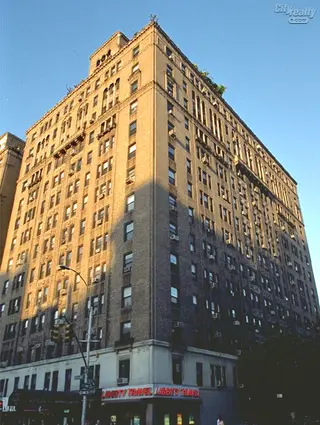
- Condop built in 1923
- 1 apartment currently for sale ($789K)
- Located in Broadway Corridor
- 98 total apartments 98 total apartments
- 10 recent sales ($952K to $3.2M)
- Doorman
- Pets Allowed
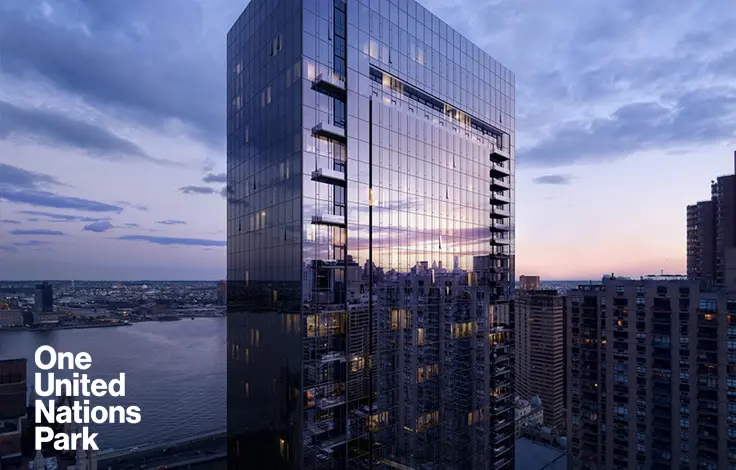
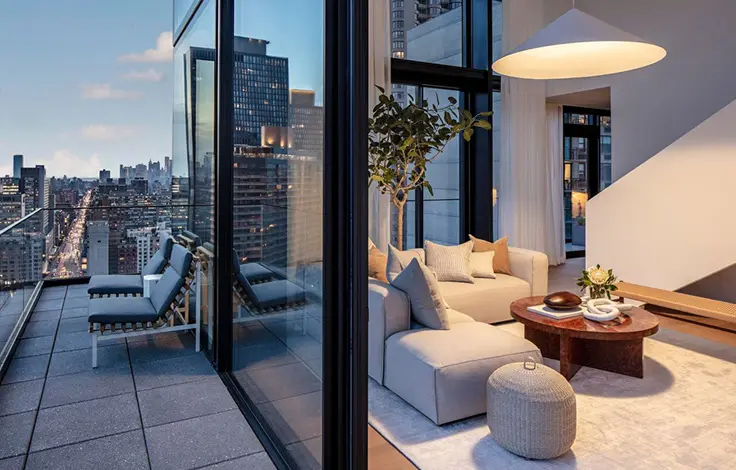
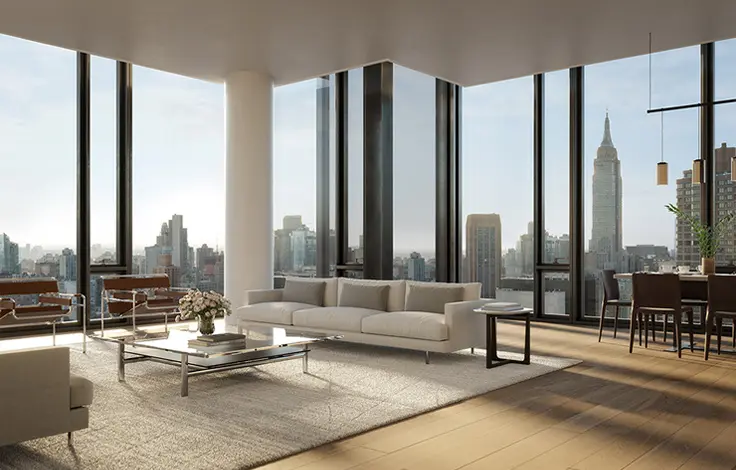

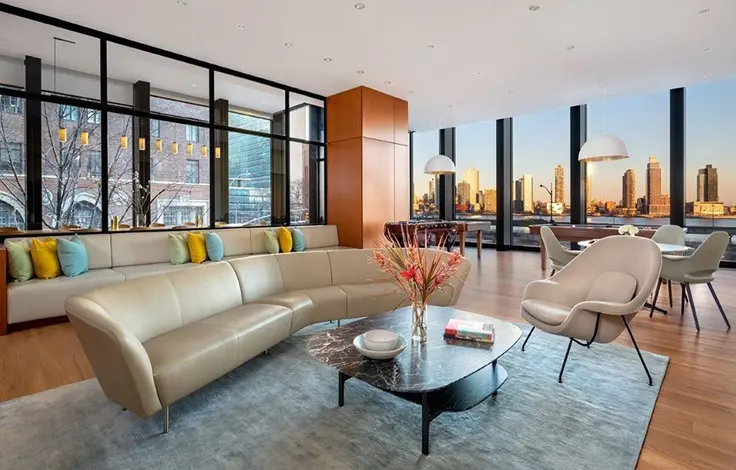
 6sqft delivers the latest on real estate, architecture, and design, straight from New York City.
6sqft delivers the latest on real estate, architecture, and design, straight from New York City.
